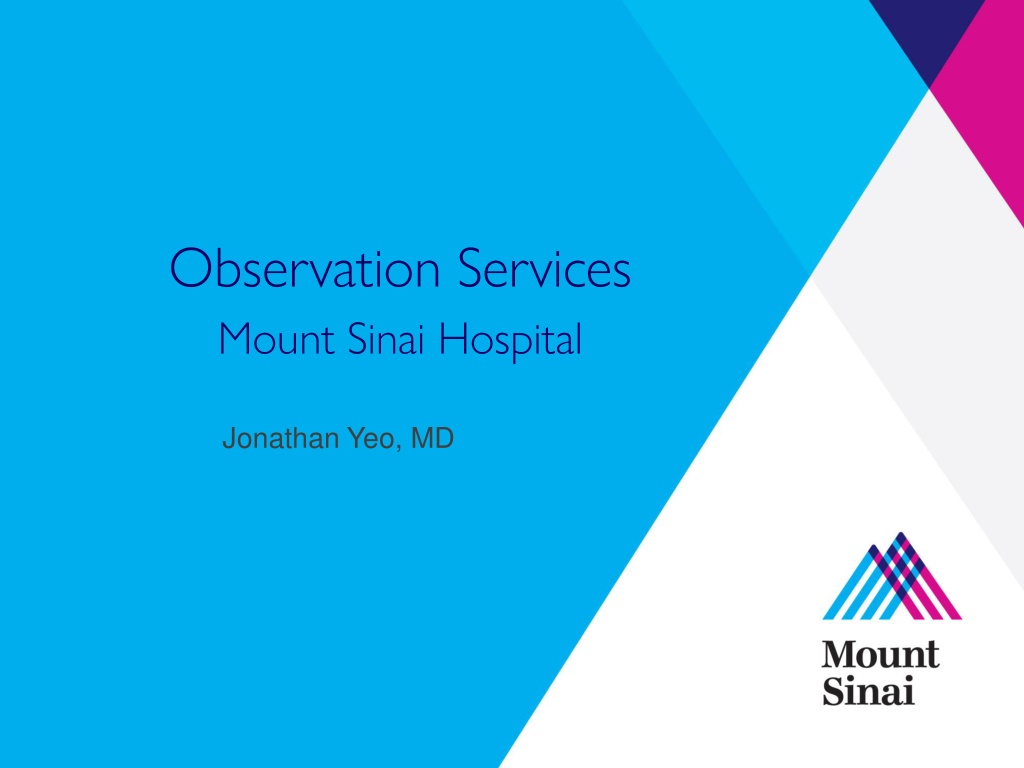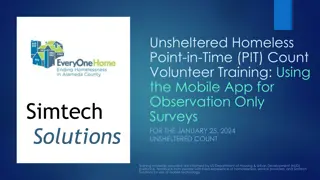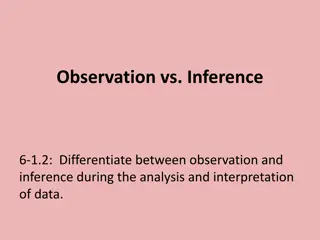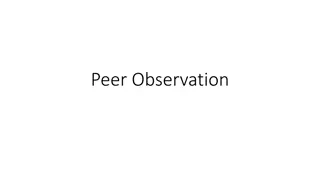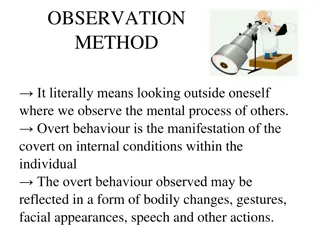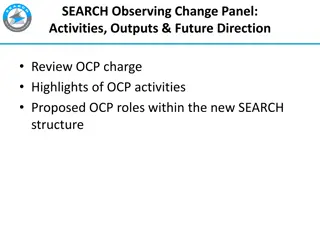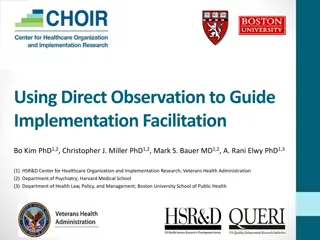Observation Services
The Observation Services at Mount Sinai Hospital, led by Dr. Jonathan Yeo, MD, provide short-term treatments and ongoing evaluation for various conditions like asthma, CHF, chest pain, and more. The dedicated unit offers 24/7 care with a nursing ratio of 5:1 and physician oversight. The team ensures patients receive timely care within a 8 to 24-hour window. With monthly metrics showcasing patient volume and outcomes, the hospital emphasizes patient safety and effective care pathways.
Download Presentation

Please find below an Image/Link to download the presentation.
The content on the website is provided AS IS for your information and personal use only. It may not be sold, licensed, or shared on other websites without obtaining consent from the author.If you encounter any issues during the download, it is possible that the publisher has removed the file from their server.
You are allowed to download the files provided on this website for personal or commercial use, subject to the condition that they are used lawfully. All files are the property of their respective owners.
The content on the website is provided AS IS for your information and personal use only. It may not be sold, licensed, or shared on other websites without obtaining consent from the author.
E N D
Presentation Transcript
Observation Services Mount Sinai Hospital Jonathan Yeo, MD
Introduction Short-term treatments (asthma, CHF, etc.) Ongoing evaluation (chest pain, syncope, etc.) Does not meet inpatient criteria Can not be discharged from the ED Requires 8 to 24 hours of care (up to 48 hours) 2
Observation Unit at MSH Dedicated unit with 20 bed capacity 24/7 double midlevel coverage ED Physician Assistants Hospitalists as physician oversight 5:1 Nursing ratio 24 hours SW coverage 12 hours/day CM 7 days/week PT consults Hospital beds provided for elderly patients 3
Current Pathways 1. 2. 3. 3. 4. 4. 5. 6. 7. 7. 8. 8. 9. 10. 11. 12. 13. 14. 15. Abdominal Pain Allergic reaction Anemia/Transfusion Anemia/Transfusion Asthma Asthma Atrial fibrillation Back pain Cellulitis Cellulitis Chest pain Chest pain CHF COPD Dehydration/vomiting/diarrhea Dialysis Drug/Alcohol Intox/withdrawal DVT GI bleed 16. 17. 18. 19. 20. 21. 22. 23. 23. 24. 25. 26. 27. 27. 28. 29. 30. 30. Head Injury/TBI Headache Hyperglycemia Hypoglycemia LVP Pneumonia Pulmonary Embolism Pyelonephritis Pyelonephritis Renal colic Seizure Sickle cell Syncope Syncope TIA Vertigo OTHER OTHER 4
Metrics Monthly volume: 350 400 patients Average LOS: 20 24 hours Average admission rate to inpatient from observation: 20% 1/3 patients are NON pathway Complex social cases Subacute rehab placements to skilled nursing facilities 30 day readmission avoided: 25 40 per month 5
The Role of Social Work in the Emergency Department Maya Genovesi, LCSW MPH Associate Director Social Work Emergency Department Social Work
Our Team & Our Role We have Social Workers & Care Coordinators on our team Social workers: Complete psychosocial assessments and to provide psychosocial/supportive counseling. With your help, we assess and meet with patients to: Determine and discuss discharge options to make the safest possible, least restrictive plan Facilitate referrals to community agencies Ensure patients have needed access to medication Arrange homecare & placement (only if required & needed) Care Coordinators: Assess barriers to engagement in primary & specialty care Effectively schedule primary & specialty appointments
What can Social Work help with? Patients who are having a hard time coping in the community due to: Change in baseline functioning Frequent falls Limited social supports Patients who have difficulty engaging in primary care due to: Difficulties with transportation Insurance issues Patients experiencing mental illness & substance abuse Patients experiencing abuse, neglect, or trauma Cardiac arrests & traumatic loss 8
What can do we do to help? Meet with patients to establish rapport and understand: How are they understanding their lives/ the problem ? What we can do to assist? Provide crisis/emotional support Connect patients to: Community resources & referrals, including: Social Work in the Community Detox, rehab, mental health resources Resources to assist in accessing insurance Shelter, food pantries, drop-in centers Home health aide & nursing services Sub-Acute Rehabilitation or Skilled Nursing Facility Home with Home Hospice/Transfer to Inpatient Hospice Facility
Types of Home Care Referrals We refer patient for home care for: Physical therapy Wound Care Home IV antibiotics Medication reconciliation Disease Education and Teaching Home safety assessment Social Work Assessment We also refer patients to: Visiting doctor programs Home Hospice/ palliative care
Placement from the ED/ RETU If medically appropriate and socially feasible, we can discharge patients directly to nursing facilities, most commonly for physical rehabilitation If you think a patient isn t faring well in the community- ask us and we will make the best & most safe plan with you! We consult physical therapy (PT) in the ED! They can be consulted in ALL ED AREAS- you don t need to admit to RETU for a PT evaluation You do not need to consult PT if you think the patient can walk- we can help you get durable medical equipment & refer to home or outpatient PT without a consult. 11
Cases of Abuse or Neglect The medical team is required to notify Social Work of all protocol cases Protocol cases include: Expirations in the ED Intimate Partner Violence/Domestic Violence Sexual Assault Physical Assault Suspected elder abuse or neglect In these cases, we: Provide trauma-focused crisis counseling & support Contact police (if indicated) Assist patients with make the safest plan possible 12
Thank You!
